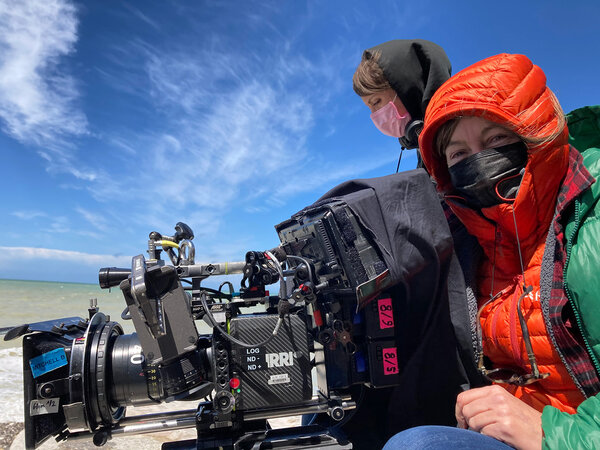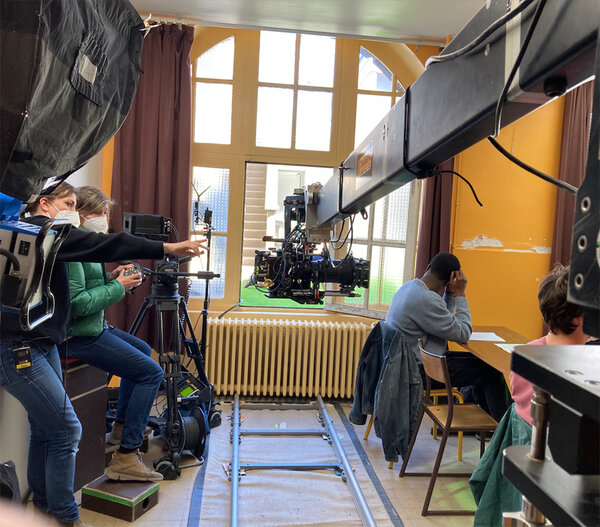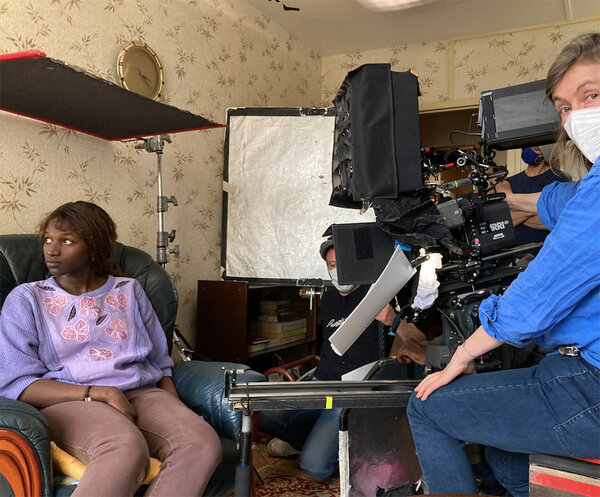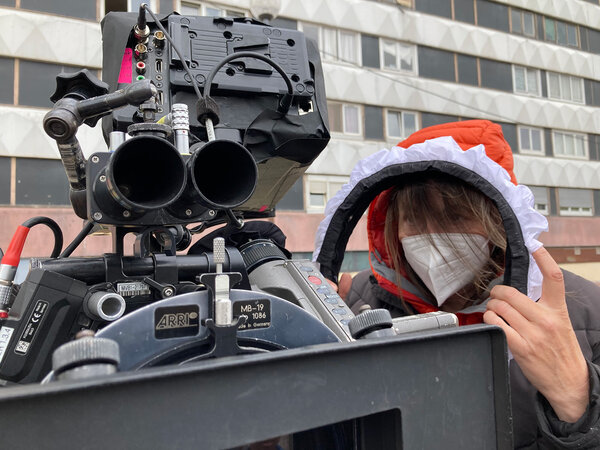Hélène Louvart, AFC, discusses her collaborative work with Léonor Séraille on “Un petit frère”
How did you prepare for the film with the director ?
Hélène Louvart : The preparation of Un petit frère was first based on the screenplay which, as soon as I read it, thought was extremely well-done. Léonor and I talked about the story in depth, first to understand the narrative stakes, then to understand and define what she wanted visually for each of the scenes, with a great deal of intuition and shared pleasure.

The progression of time is very fluid, almost invisible : was this an editorial but also visual choice ?
HL : The question of medium was raised from the start of preparation. Léonor and I discussed the possibility of mixing media for the different parts of the film (Rose, Jean and Ernest) in order to suggest the different eras ranging from the 80s to the present day. We did some screen tests with Annabelle Langronne (Rose) at Panavision to test 35mm, Super 16 and digital. The results were very interesting, very specific to each format. But it turned out that digital was more financially feasible, and perhaps simpler too, the story no longer required mixed media, and in the end, we had no regrets over our choice.
The film has great unity in terms of lighting and the camera movements that never startle...
HL : We chose Cooke lenses for their softness in the rendering of the skins. It’s an intimate film, the light had to have a natural rendering, apart from certain key moments in the narration where we could afford to interpret them with more obvious light or camera movement. Here are examples of these specific moments.

In chronological order of the film
The Party at the Castle
During a party thrown in a castle by the owner of the hotels where Rose works as a chambermaid, to signify both the period and Rose’s carefreeness, the colors are strongly visible. A more permissive time.
Le dormeur du val
Jean (20 years old) is in a classroom. During an examination, he turns his head towards the window where he sees a huge lawn. We escape with him, towards this synthetic green lawn, which is in Jean’s mind, not real. In voiceover, Rimbaud’s poem “Le dormeur du val” is recited and then we see Ernest, the reciter, seated on the edge of the bathtub, in early evening, with the last rays of the sun. The tracking shot, in the classroom, was carried out with an arm (non-telescopic) and a remote head.
Rouen apartment
Rose smokes and drinks in front of an open window in the Rouen apartment against a totally black window background. She’s wearing a blue dress and a red cloth in her hair. She stands out with an orange backlight and this moment is seen by Jean (20 years old) who is “spying” on her. It’s a much less realistic image, like an interpretation of what he sees filtered through the prism of his feelings. For this, we installed an LED projector on an offset arm from the window of another room in the apartment.
Camille’s house
Jean is wandering around the ground floor of his friend Camille’s house, all dressed up in a suit. A mirror observes him (gaze close to the lens) and he observes himself in the mirrors. He vomits in the bathroom. He notices the presence of a stuffed deer’s head, eerily lit in blue-green and mauve. This is Jean’s subjective perception at the time, but it is definitely not realistic.
The forest and the moon
Jean is running in the forest. The moon is a little “too present and mauve,” the shadows are a little too “cyan”. A fairly invisible perception on his part but we depart from realism.

The nightclub
Jean is dancing in a nightclub. Then we see his mother but with her appearance from the first part of the film. He goes to sit by her side, she’s a bit like an apparition. The color changes when she is seen for the first time (orange for her). Whereas, while he’s dancing, it’s shades of blue and green. When he smiles at her, the color changes during the shot. This color change was performed during color grading.
The sheep pen
Well-defined areas of light and shade, conducive to intimacy, as the shade allows the two teenagers to seek each other out. Contrast is the most visible element during this scene, and the color could afford to be neutral.
Rose’s new apartment
A very bright, white, uncluttered apartment, where the faces are clearly lit by the reflection of the table, by the whiteness of the furniture, the opposite of the effect sought in the sheep pen.
The cafeteria
Rose and Ernest (25 years old). Sharpness on the skin, precision on the faces with a more “incisive” lens effect.
You’ve been looking for ways to improve teamwork and you tested it out on this film, tell us how.

HL : In order to give greater importance to the (invaluable) role of second camera assistant, Arthur Briet became, during filming, my “eye” and my color and exposure advisor, by setting up a perfectly calibrated screen and a waveform, and, via the walkie-talkie and the earpiece, he would skillfully influence me in terms of exposure and, therefore, on color rendering. His kind and gentle approach became essential to me as shooting progressed, and it was a way of allowing myself to question my own choices, and to be able to make the change in his role official on our next film.
And a big thank you to the whole team, to Léonor, and to all those who helped make the film such a success.
(Interview by Brigitte Barbier, for the AFC, translated from French by A. Baron-Raiffe)
 En
En Fr
Fr




